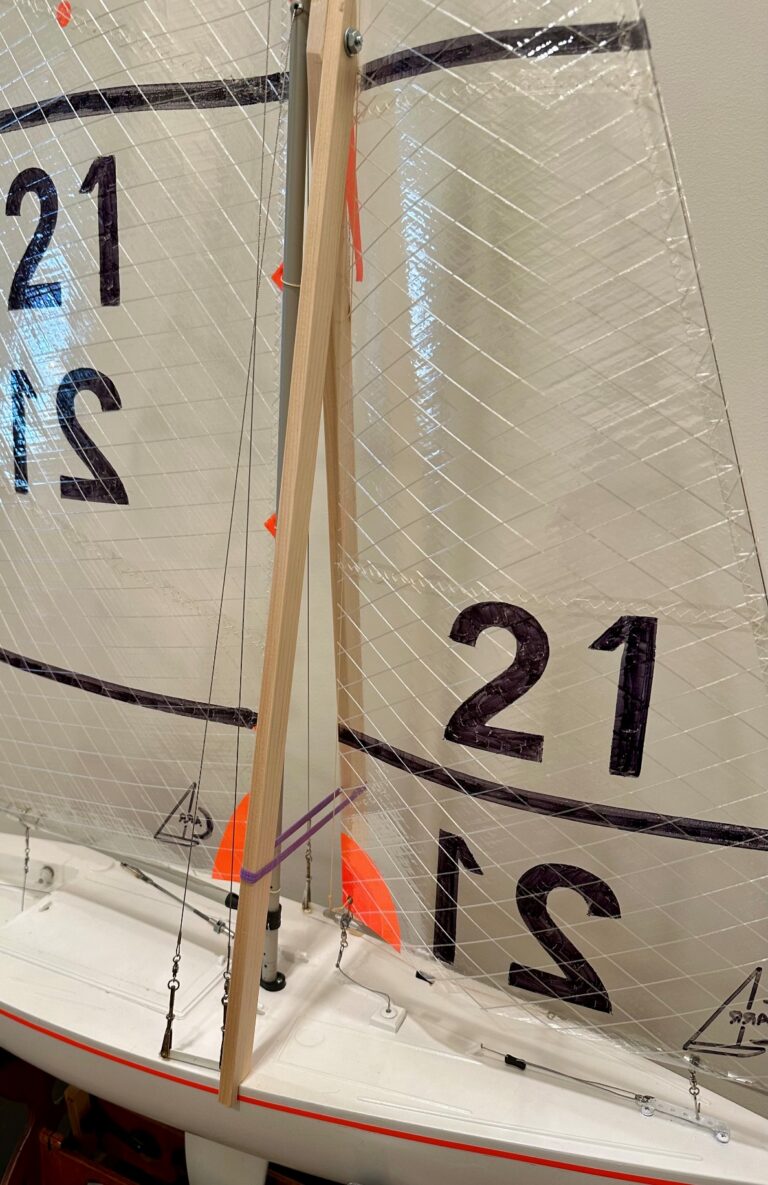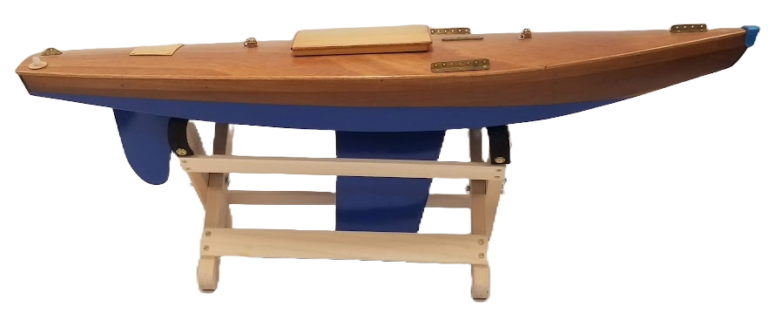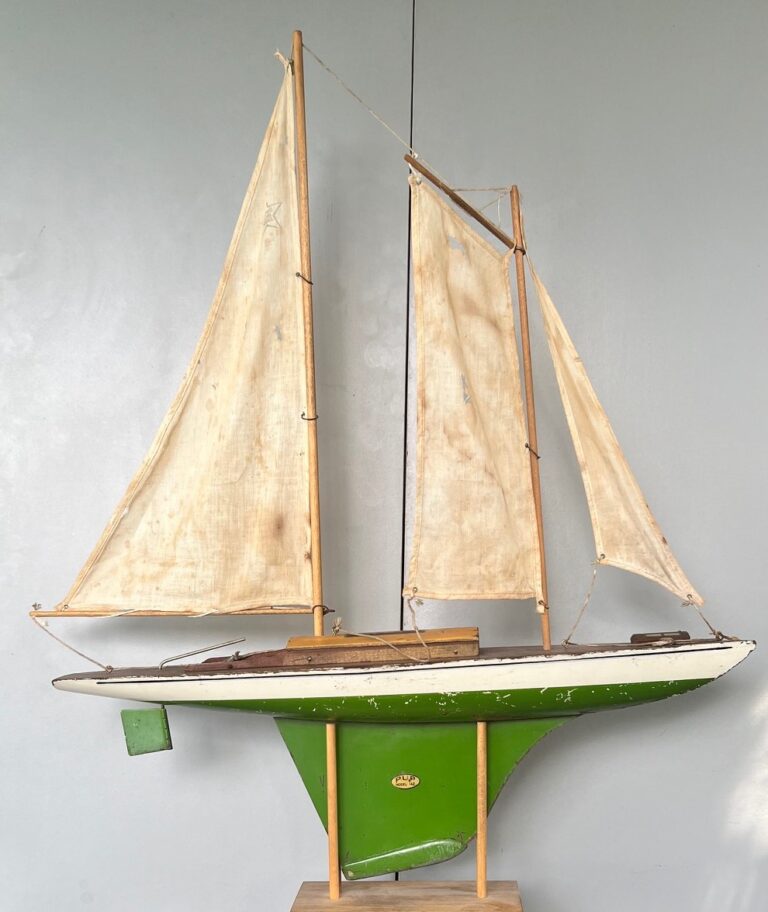By Ken Young
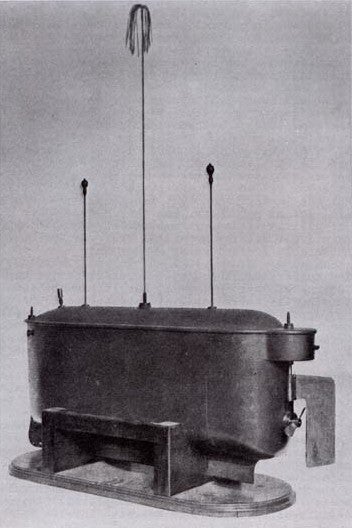
Born in 1856, Nikola Tesla was a Serbian-American inventor and engineer. He is best known for his contribution to the design of an alternating current electrical supply system. He was a futurist who worked with Thomas Edison for a short time and then went on his own and secured numerous US patents.
Most important to the R/C world was his design and propulsion. His patent description was, “Method of an Apparatus for Controlling Mechanism of Moving Vehicle or Vehicles.”
In 1898, at Madison Square Garden, Tesla set up an indoor pool. He had a 4-ft long miniature ship and a control box with several levers. The deck of the ship had three antennas. The tallest was in the middle, and the outside two had lights on top to indicate position and direction at night. Inside there was an electric motor that drove both the propeller and rudder, a storage battery, and a device for receiving radio waves sent from the control box. He called his invention a “Teleautomoton”. This particular demonstration craft was dubbed Devil Automata.

We have to remember that at that time few people knew that radio waves even existed. Tesla was an inventor to make money and was a showman who promoted his creations in sometimes flamboyant fashion. At the beginning of the demonstration he informed the crowd that it worked by magic. He would yell at it to make it do what he wanted, leading some observers to speculate that there was a trained monkey inside. He demonstrated that it could answer questions from the crowd. Someone called out for the cubed root of 64. The lights on the antennas flashed four times. Of course, Tesla was moving levers on the control box.
He then showed what was actually happening with the control box. Since there was no visible connection between the control box and the boat, he said the boat had a “borrowed mind” that responded to orders from a distant and intelligent operator. He saw great potential for military use. He eventually developed unmanned torpedo boats carrying an explosive charge directed by radio waves, much like modern day drones. It wasn’t until the late 20th century that the military made significant use of his invention.

The accompanying article by John Henderson explains more about the technical aspect of his invention.
Bibliography
- ARS Technica July 17, 2013.
- Turi, J. Engadget January 19, 2014.
- Nye, Logan. “We Are Mighty” Insider, Tesla Memorial Society, August 25, 2016.
Tesla’s Remote-controlled Boat
Article by John Henderson
Nikola Tesla demonstrated a radio-controlled boat in 1898 at the Electrical Exhibition in Madison Square Garden. His invention is described in US patent #613,908, which is dated November 8, 1898. The key concept of control at a distance, without any wires or other mechanical connections between the controller and the controlled boat, was almost magic in its day.
Radio itself was new at the time. Tesla had filed a patent application for basic radio just one year before this demonstration in September 1897, but the patent was not granted until March 1900. There was a fascinating and disturbing battle with Marconi over the basic radio patent. Marconi’s patent application in the US in 1900 was denied at first because of Tesla’s prior work. Inexplicably, the US Patent Office reversed itself in 1904 and granted Marconi the radio patent. But in 1943 the US Supreme Court upheld Tesla’s radio patent. Explanations for all this are murky, involving both politics and financial clout.
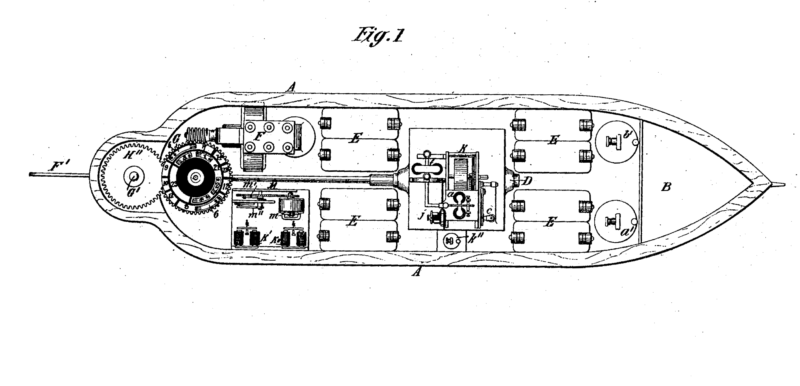
Tesla’s boat was about 4 1/2 ft long, built of steel, and described as “tub-like.” He was demonstrating control, not naval architecture. The transmitter had a “Tesla oscillator” that emitted radio frequency pulses through a tuned circuit and antenna; the receiver had a matching tuned circuit to recover these pulses. The tuned circuits are important to improve the sensitivity of the receiver and to eliminate interference from other static generated (for example) by the electric motor in the boat. Tesla mentions specifically the care needed to prevent and filter out sparking from the relay contacts that controlled the motor.
Tesla invented a kind of radio-activated switch that he called a “coherer”, which would become conductive after receiving a pulse. The switch mechanism is interesting. It was a container with small and carefully manufactured metal oxide particles. The pulse caused the particles to align (electrostatically?), make contact with each other, and form a conductor The current from the switch rotated a disk through discrete positions through a clockwork escapement mechanism. Each position had a set of contacts that activated specific functions: turn rudder right; turn rudder left; stop turning rudder; run the electric motor; turn the motor off. The operator had to step through these function options sequentially, but apparently could do so rapidly. There were lights on top of the boat to tell the operator the position of the disk. After the disk rotated to its next position, a geared mechanism would flip over the container of the particles so that the next signal could be received.
Sources
- PBS.org. “Tesla – Inside the Lab – Remote Control” http://www.pbs.org/tesla/ins/lab_remotec.html.
- Tesla’s US Patent #613809A, issued 1898 “Method of and apparatus for controlling mechanism of moving vessels or vehicles.” https://patents.google.com/patent/US613809A/en.
- Tesla Memorial Society of New York. https://www.teslasociety.com/radio.htm.
- “Invention of radio – Tesla vs. Marconi.” https://www.pbs.org/tesla/ll/ll_whoradio.html.

